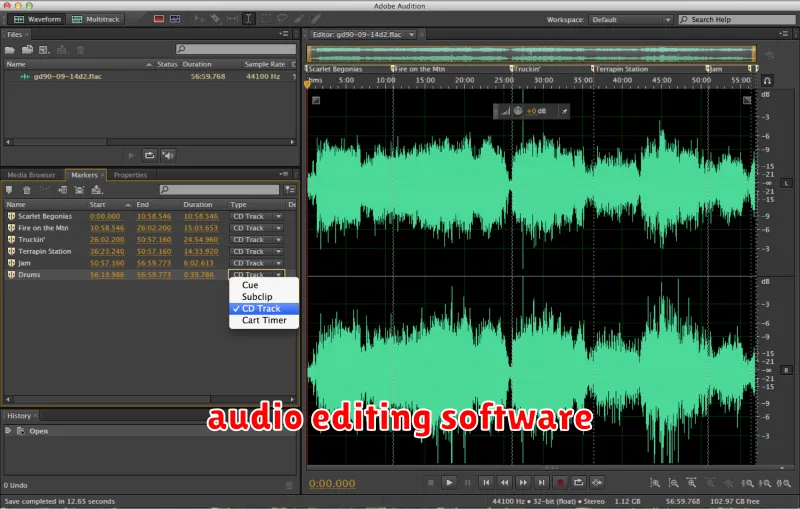Are you a professional audio engineer, musician, or podcaster looking to take your workflow to the next level? The right audio editing software can make all the difference in the quality of your final product, allowing you to achieve a more polished and professional sound. With so many options available, it can be overwhelming to choose the best software for your needs.
This article will provide you with a comprehensive guide to the best audio editing software for professionals in 2024. We’ll delve into the top contenders, highlighting their key features, pros, and cons to help you make an informed decision. Whether you’re a seasoned veteran or just starting out, this guide will equip you with the knowledge to find the perfect software to elevate your audio editing game.
Adobe Audition
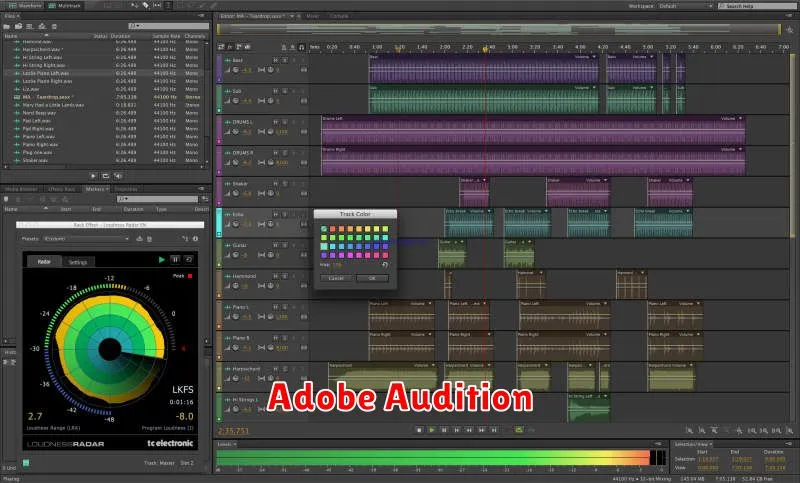
Adobe Audition is a powerful and versatile digital audio workstation (DAW) specifically designed for professional audio editing, mixing, and mastering. Its comprehensive suite of tools and features caters to various audio professionals, including podcasters, music producers, sound designers, and audio engineers.
One of the key strengths of Adobe Audition is its multi-track editing capabilities. This allows users to work on multiple audio tracks simultaneously, enabling seamless layering, arrangement, and editing of complex audio projects. The software also offers an array of powerful audio effects, including noise reduction, equalization, reverb, delay, and more, providing comprehensive tools for shaping and enhancing audio quality.
Another notable feature is its integrated spectrogram view, which provides a visual representation of audio frequencies over time. This visual feedback assists in tasks like audio restoration, noise removal, and isolating specific sounds. Moreover, Adobe Audition excels in audio restoration, offering tools to effectively remove unwanted noise, clicks, pops, and other imperfections from recordings.
Adobe Audition seamlessly integrates with other Adobe Creative Cloud applications, facilitating effortless workflow for multimedia projects. Its intuitive interface and comprehensive documentation make it relatively easy to learn and master, even for beginners. Overall, Adobe Audition stands as a top choice for audio professionals seeking a robust and feature-rich DAW to enhance their workflow and deliver exceptional audio results.
Avid Pro Tools
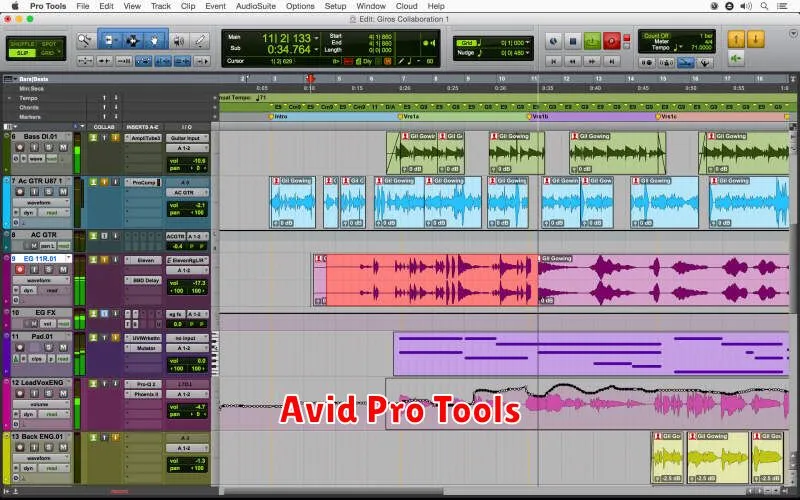
Avid Pro Tools is the industry-standard audio editing and production software used by professionals across the globe. It’s a powerful and versatile tool, offering a wide range of features for music production, sound design, film and television post-production, and more.
One of the key advantages of Pro Tools is its extensive plugin ecosystem. With thousands of plugins available, users can customize their workflow and achieve a vast range of sonic results. Whether you’re looking for effects, instruments, or creative tools, there’s likely a Pro Tools plugin that can meet your needs.
Pro Tools also boasts robust collaboration features. Users can easily share projects with others, allowing for seamless collaboration on audio projects. This is especially valuable for teams working on large-scale productions, as it facilitates efficient communication and workflow.
In addition to its advanced features, Pro Tools is known for its reliability and stability. It’s a software that professionals can trust to deliver high-quality results. The intuitive interface and comprehensive documentation also make it relatively easy to learn, even for beginners.
Logic Pro X
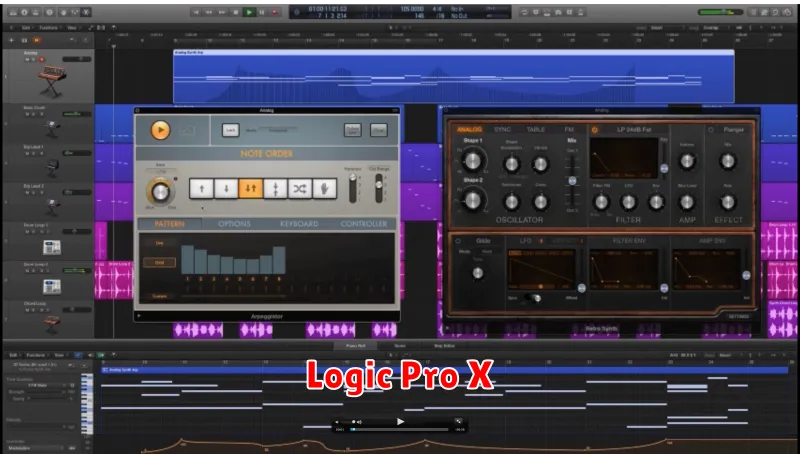
Logic Pro X is a powerful digital audio workstation (DAW) designed for professional music production and audio editing. It offers a comprehensive set of tools, features, and instruments, making it a top choice for musicians, sound engineers, and producers.
Logic Pro X boasts an intuitive and user-friendly interface, ideal for both beginners and experienced users. Its extensive library of virtual instruments, sound effects, and loops provides a wide range of creative possibilities. The software’s powerful editing tools allow for precise audio manipulation, while its advanced features like automation and MIDI editing enhance workflow efficiency.
Key advantages of using Logic Pro X include its robust audio engine, providing exceptional sound quality and performance. Its extensive compatibility with industry-standard formats and plugins ensures seamless integration with other music production tools. Additionally, Logic Pro X features a comprehensive set of mixing and mastering tools, empowering users to achieve professional-grade results.
Whether you’re a seasoned professional or a budding musician, Logic Pro X provides a comprehensive and intuitive platform for unleashing your creative potential. Its powerful features, comprehensive tools, and user-friendly interface make it an excellent choice for anyone looking to elevate their audio production workflow.
Steinberg Cubase
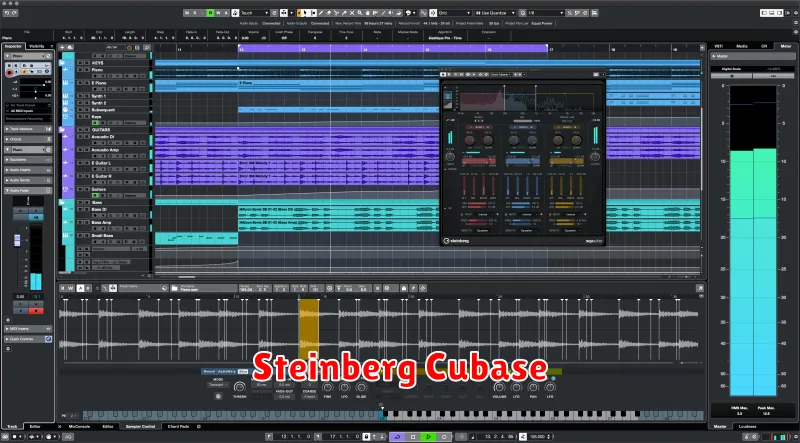
Cubase is a powerful and versatile Digital Audio Workstation (DAW) developed by Steinberg. It’s widely recognized as one of the best audio editing software options for professionals in 2024. Known for its comprehensive feature set, intuitive interface, and robust performance, Cubase caters to various musical genres and production styles.
One of Cubase’s strengths lies in its audio editing capabilities. The software boasts advanced tools for precise editing, including powerful audio quantization and flexible automation features. Its comprehensive suite of audio effects, ranging from classic EQs and compressors to innovative creative processors, provides musicians and producers with the tools to shape their sound.
Beyond audio editing, Cubase excels in MIDI sequencing. It offers a wide selection of virtual instruments, drum samplers, and powerful MIDI editing tools. This makes it an ideal choice for composers, songwriters, and electronic music producers who rely on MIDI for their creative process.
Cubase’s user-friendly interface and flexible workflow allow for both beginners and experienced professionals to comfortably navigate and utilize its extensive features. Whether you’re creating complex orchestral arrangements, producing electronic music, or recording and editing vocals, Cubase provides a comprehensive solution.
In conclusion, Steinberg Cubase remains a top contender in the audio editing software market. Its blend of advanced features, intuitive workflow, and powerful performance makes it an essential tool for professional musicians, producers, and audio engineers seeking to elevate their workflow and achieve exceptional results in 2024.
Ableton Live
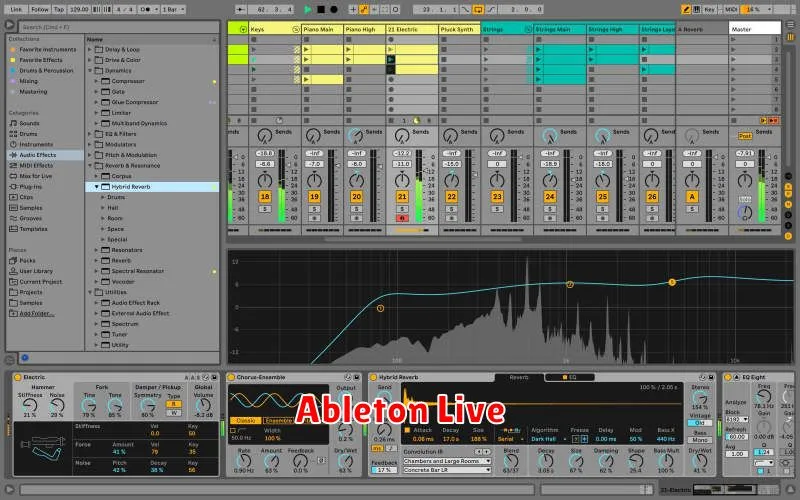
Ableton Live is a powerful and versatile digital audio workstation (DAW) that has become a popular choice for musicians, producers, and DJs. Its intuitive interface, flexible workflow, and unique features make it an excellent tool for creating, performing, and manipulating audio.
One of Ableton Live’s key strengths is its session view, which allows you to arrange musical ideas in a grid-like interface. This makes it easy to experiment with different song structures, loop arrangements, and improvisation. Ableton Live also excels in real-time performance, allowing you to seamlessly trigger samples, loops, and instruments during live sets.
The software’s audio editing capabilities are equally impressive. It offers a comprehensive set of tools for trimming, splicing, and manipulating audio, along with advanced features like warping, pitch shifting, and time stretching. Ableton Live’s MIDI editing functions are also top-notch, providing a user-friendly environment for creating and editing MIDI sequences.
Ableton Live’s extensive library of instruments, effects, and samples gives users a wide range of creative possibilities. The software also integrates seamlessly with third-party plugins and virtual instruments, further expanding its capabilities. Its flexible routing system allows you to create complex signal chains and experiment with different audio processing techniques.
Whether you’re a seasoned professional or a budding musician, Ableton Live offers a comprehensive and inspiring platform for music creation and performance. Its intuitive interface, powerful features, and focus on real-time workflow make it a top choice for those seeking to elevate their audio editing process.
FL Studio
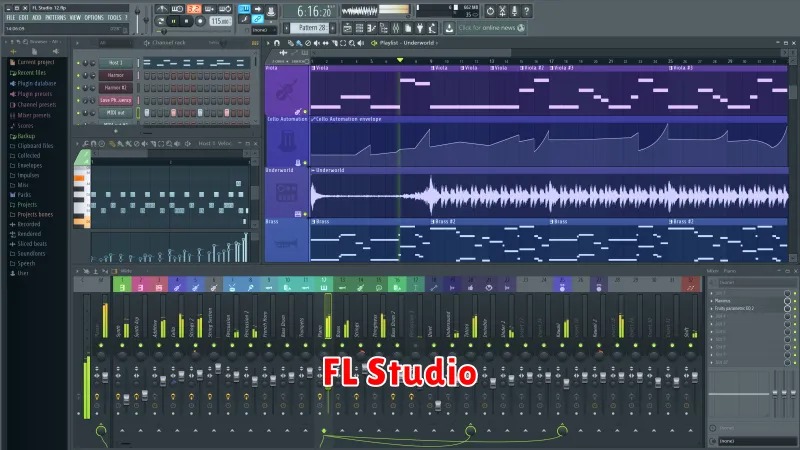
FL Studio, previously known as FruityLoops, is a powerful digital audio workstation (DAW) that has become a go-to choice for musicians, producers, and beatmakers worldwide. It boasts a wide array of features, making it suitable for various genres and production styles. Its intuitive interface, extensive plugin library, and versatile features make it an excellent option for both beginners and seasoned professionals.
One of FL Studio’s most notable strengths is its lifetime updates policy. This means that once you purchase FL Studio, you’ll receive all future updates and upgrades for free, ensuring that you always have access to the latest features and functionalities.
FL Studio excels in various areas, including:
- Piano Roll Editor: A user-friendly interface for composing melodies and arranging music with advanced editing tools.
- Step Sequencer: A grid-based interface for creating beats and rhythms quickly and efficiently.
- MIDI Editor: Provides precise control over MIDI data, enabling you to shape and refine your musical ideas.
- Audio Editing Tools: FL Studio offers a comprehensive suite of tools for editing, processing, and manipulating audio.
- Automation: Allows you to automate various parameters, including volume, panning, effects, and more, adding dynamic elements to your productions.
- VST Support: Seamlessly integrate third-party plugins and instruments, expanding FL Studio’s functionality even further.
FL Studio has become a cornerstone for many successful artists, producers, and composers. Its user-friendly interface, lifetime updates, and comprehensive feature set make it a top contender for audio editing software in 2024.
Audacity
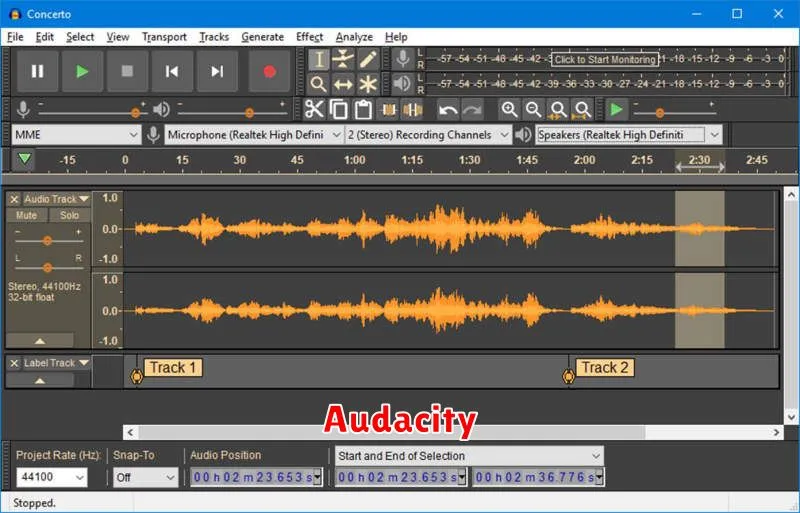
Audacity is a free, open-source, cross-platform audio editor and recorder. It is widely used by musicians, podcasters, and audio engineers for its intuitive interface, powerful features, and versatility. Here’s why Audacity is a go-to choice for many audio professionals in 2024:
Ease of Use: Audacity boasts a user-friendly interface that is easy to learn, even for beginners. Its intuitive layout makes it straightforward to navigate, record, edit, and mix audio.
Powerful Features: Despite being free, Audacity packs a punch with features like multi-track recording, audio effects (including noise reduction, equalization, and compression), and the ability to import and export various audio formats.
Customization: Audacity offers a high degree of customization. Users can configure keyboard shortcuts, change themes, and even create their own plugins to extend its functionality.
Open Source: Being open-source means Audacity is constantly evolving and improving through community contributions. This also ensures its long-term availability and support.
Cross-Platform Compatibility: Audacity runs on Windows, macOS, and Linux, making it accessible to a wide range of users.
While Audacity may not have all the bells and whistles of some professional-level commercial software, its free and feature-rich nature makes it an excellent choice for anyone looking to edit and enhance audio. Whether you are a beginner or a seasoned professional, Audacity provides the tools you need to create high-quality audio content.
Reaper
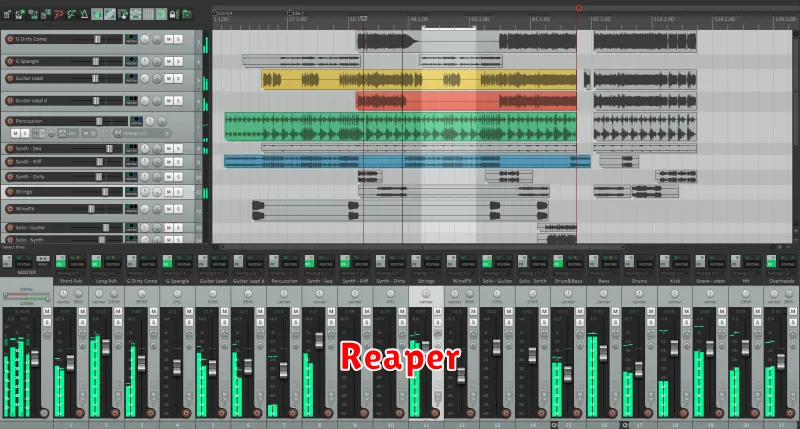
Reaper is a powerful and versatile digital audio workstation (DAW) that has gained a loyal following among audio professionals for its flexibility, affordability, and feature-rich interface. It offers a wide range of tools for recording, editing, mixing, and mastering audio, making it a suitable choice for a diverse range of tasks, from music production to podcasting and sound design.
One of Reaper’s key strengths lies in its customizability. Users can personalize the interface to suit their workflow, configuring key bindings, creating custom actions, and even scripting to automate repetitive tasks. This adaptability allows users to tailor Reaper to their specific needs and preferences, maximizing efficiency and productivity.
Despite its extensive feature set, Reaper remains remarkably lightweight, running smoothly even on older computers with limited resources. This makes it an attractive option for professionals who need a reliable DAW that can handle demanding projects without bogging down their system.
Furthermore, Reaper boasts a robust plugin ecosystem, allowing users to expand its functionality with a vast library of third-party plugins. This opens up a world of possibilities for sound design, effects processing, and instrument emulation, empowering professionals to achieve their creative vision.
If you’re looking for a powerful, customizable, and affordable DAW that can handle a wide range of audio production tasks, Reaper is a strong contender worth considering. Its impressive feature set, flexible workflow, and thriving community make it a compelling choice for professionals seeking a reliable and efficient audio editing solution.
Sound Forge Pro
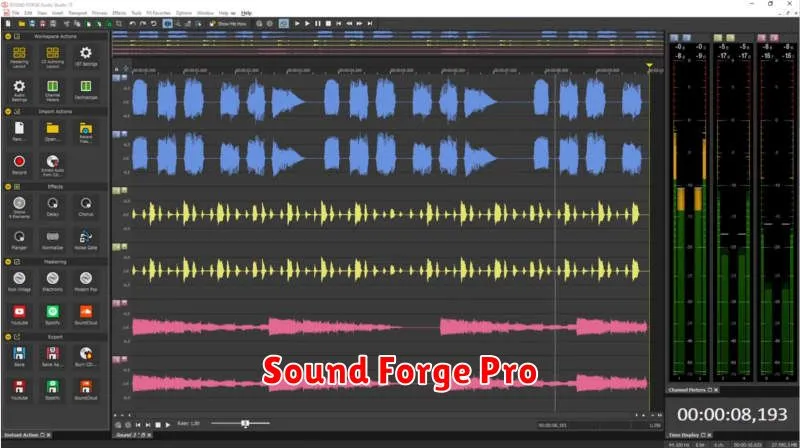
Sound Forge Pro is a professional audio editing software that offers a comprehensive set of tools for recording, editing, and mastering audio. It is a powerful and versatile program that is popular among musicians, podcasters, and other audio professionals.
Some of the key features of Sound Forge Pro include:
- Multi-track editing: You can easily edit multiple audio tracks simultaneously.
- Advanced audio effects: The software includes a wide range of built-in effects, such as EQ, compression, reverb, and delay.
- Looping and sample editing: You can create and edit loops and samples with ease.
- Batch processing: You can apply the same effects or changes to multiple files at once.
- Support for various audio formats: Sound Forge Pro supports a wide range of audio formats, including WAV, MP3, AIFF, and Ogg Vorbis.
- Advanced automation: Automate repetitive tasks and streamline your workflow.
Sound Forge Pro is a powerful and versatile audio editing software that is ideal for professionals who need a comprehensive set of tools for creating high-quality audio.
Studio One
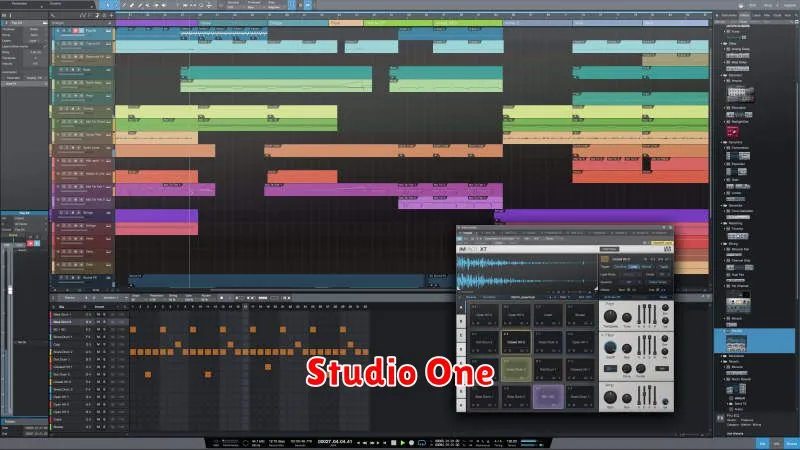
Looking for the best audio editing software to elevate your workflow in 2024? Look no further than Studio One. This powerful and intuitive DAW (Digital Audio Workstation) offers a comprehensive set of tools for musicians, producers, and audio engineers of all levels.
One of Studio One’s key strengths is its user-friendly interface, making it easy to navigate and find the features you need. Its drag-and-drop functionality allows for seamless arrangement of tracks, while the Scratchpad feature lets you experiment with ideas without disrupting your main project.
Studio One also boasts an impressive array of features, including:
- Advanced audio editing tools: From precise cutting and splicing to noise reduction and restoration, Studio One equips you to achieve professional-quality results.
- Extensive virtual instruments and effects: Its library of high-quality instruments and effects provides everything you need to create and enhance your music.
- Seamless integration with other software: Studio One plays nicely with other music production tools, ensuring a smooth workflow.
- Strong support and community: PreSonus, the company behind Studio One, offers excellent customer support and a vibrant online community.
Whether you’re a seasoned professional or just starting out, Studio One offers a compelling solution for all your audio editing needs. Its intuitive interface, powerful features, and robust support make it a top contender in the DAW landscape.

